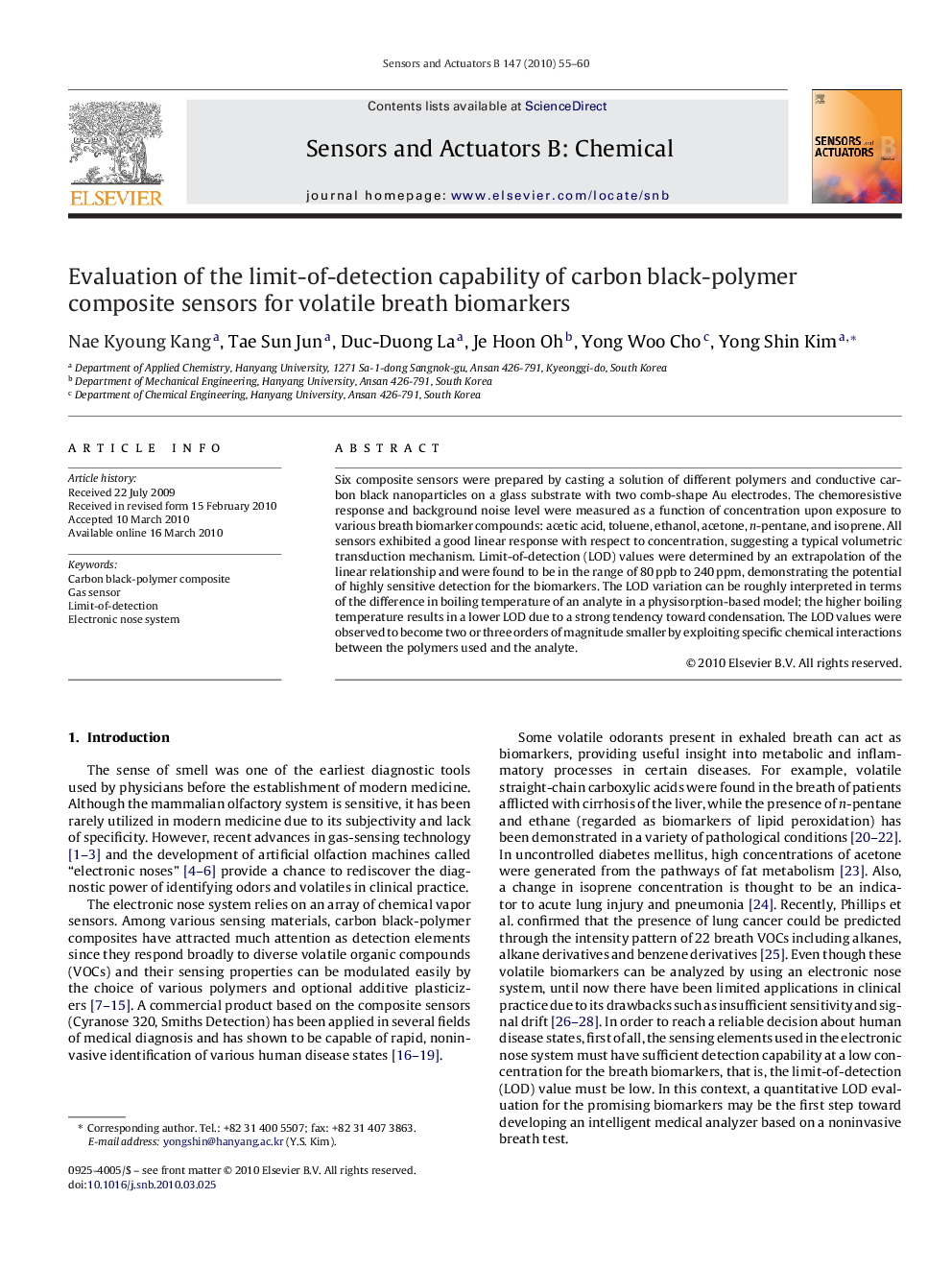| Article ID | Journal | Published Year | Pages | File Type |
|---|---|---|---|---|
| 741010 | Sensors and Actuators B: Chemical | 2010 | 6 Pages |
Six composite sensors were prepared by casting a solution of different polymers and conductive carbon black nanoparticles on a glass substrate with two comb-shape Au electrodes. The chemoresistive response and background noise level were measured as a function of concentration upon exposure to various breath biomarker compounds: acetic acid, toluene, ethanol, acetone, n-pentane, and isoprene. All sensors exhibited a good linear response with respect to concentration, suggesting a typical volumetric transduction mechanism. Limit-of-detection (LOD) values were determined by an extrapolation of the linear relationship and were found to be in the range of 80 ppb to 240 ppm, demonstrating the potential of highly sensitive detection for the biomarkers. The LOD variation can be roughly interpreted in terms of the difference in boiling temperature of an analyte in a physisorption-based model; the higher boiling temperature results in a lower LOD due to a strong tendency toward condensation. The LOD values were observed to become two or three orders of magnitude smaller by exploiting specific chemical interactions between the polymers used and the analyte.
